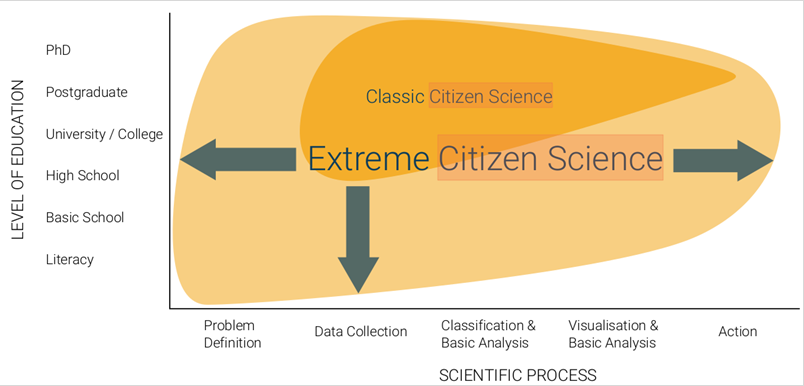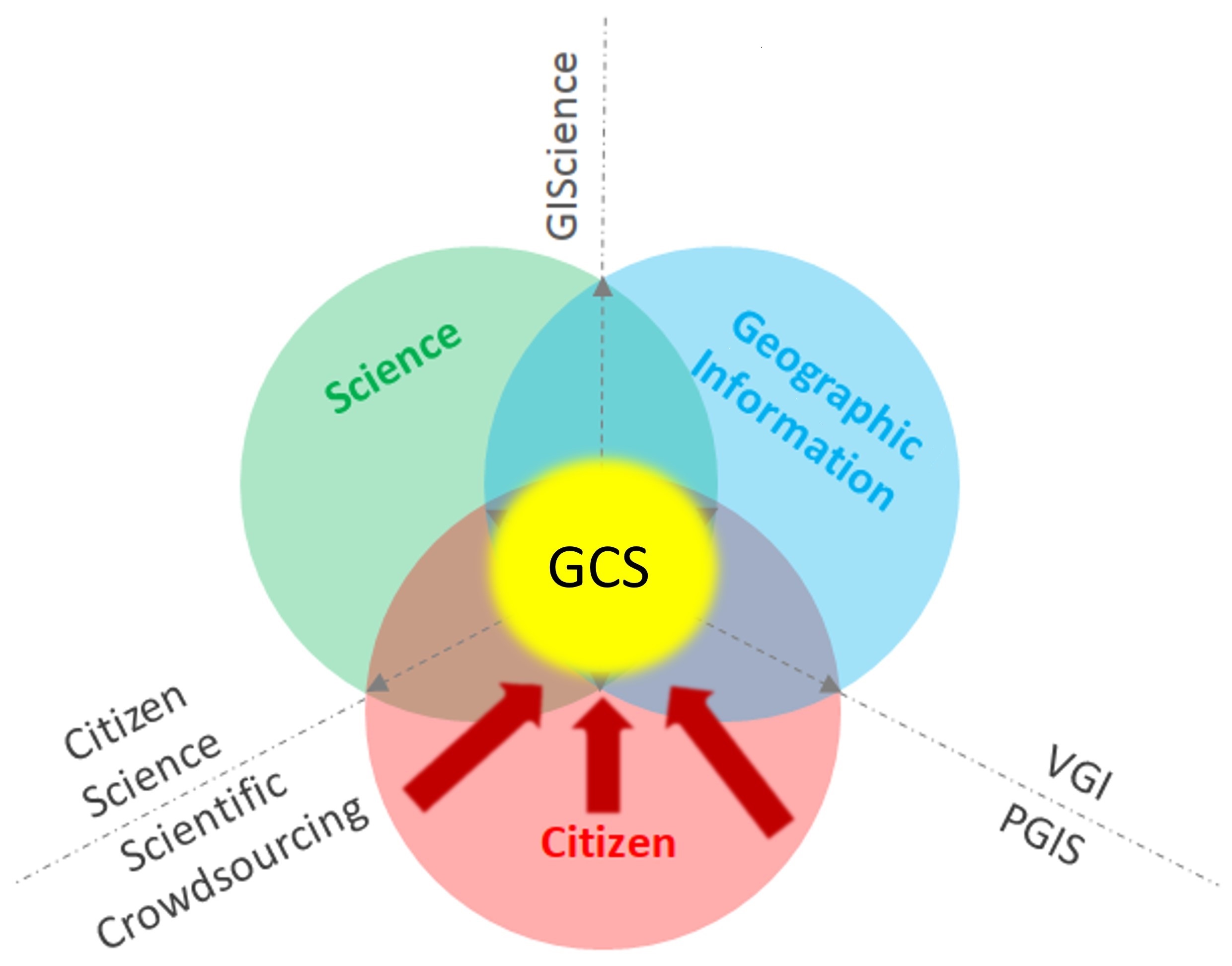Before starting this section you should have completed Section 1: “Understanding Sapelli”
2.1. What is citizen science?
The term citizen science is used to describe a wide range of activities in which people, who are not employed as professional researchers or scientists, take an active part in a research project or scientific work. This means going beyond being “research subjects” – for example when researchers ask people to answer a questionnaire or participate in a medical trial.
Many times, such projects are led by scientists who then ask members of the public to join and help in a specific task. Such tasks can be looking at different images on a computer and classifying them, so the scientists have a large data set that they can analyse. Another example is when scientists ask people to collect data, such as pictures of species of flowers and plants that they see around them.
Other types of citizen science give the people who participate in the projects a larger role – for example, asking more detailed research questions or even deciding which data to collect and what will be done with the data that is collected. There are also examples of projects that have not involved scientists at the beginning of the project. This can happen in communities that are facing an environmental problem such as a polluting factory and want to collect evidence of the pollution.

The official Oxford English Dictionary definition of citizen science is “Scientific work undertaken by members of the general public, often in collaboration with or under the direction of professional scientists and scientific institutions.” and we can see that it includes lots of variations.
2.2. What makes something scientific?
Although this is a generalisation, the modern scientific method is based on observation and systematic data collection about things in the world. These data points, or facts, are analysed to identify patterns and trends. In citizen science, the “scientific” aspect of the project can come in different ways. For example, when observing a plant or a flower, we can take a picture with a smartphone. The smartphone will record the location, with the help of information from satellite, and the time. This turns our picture into potentially a scientific observation because we have a precise time and place of it. Citizen science can be also part of social sciences or the humanities when people participate in systematic data collection – such as recording community memories or digitising records from historical documents.
Scientific work includes many forms of research activity. It might include working in the laboratory with sophisticated equipment, and it might be a regular sampling of the water quality in a local stream to monitor the situation. The common element in the range of the activities is the use of systematic observations and data collection that is then analysed using established methods that are used by scientists.
It is important to remember that what is considered ‘science’ is inherently political. What is commonly considered “legitimate” and “scientific” is based on a very specific cultural context. Part of the work of ExCiteS is to valorise indigenous ways of knowing and science.
2.3. When is Citizen Science Geographic?
This is rather simple – when the data that is collected includes location information usually in the form of GPS coordinates. In addition, we expect that this location information will be used for the analysis or visualisation of the data. When these conditions are met, we would call the citizen science project a geographic citizen science project. This can be used for all sorts of things – for example, in most of the research about ecology, such as the distribution of species, geography is very important. In geographic citizen science, it is common to see maps being used to visualise information.
The diagram below shows how Geographic Citizen Science (GCS) is related to citizen science and other forms of knowledge production practices such as Volunteered Geographic Information (VGI) and Participatory Geographic Information Systems (PGIS).

2.4. Citizen science: tools, methods and approaches
In citizen science, many tools and methods are being used. They will depend, first and foremost, on the scientific area in which the research is carried out. For example, if the project relates to social science then the tools that will be used for the research are likely to include engaging community researchers in interviewing members of their community and analysing the information that was provided to identify common themes. In contrast, in a life science project, participants may be involved in collecting and analysing samples of DNA, and using a laboratory, with the guidance of people with experience in the life sciences.
However, there are some commonalities. For example, the wide availability of smartphones makes them, and the sensors that are integrated into them, a very attractive tool for citizen science projects. Therefore we can find projects that are using the things that the phone can “sense” – take an image, identify a location, or measure movements – and use them for a specific application. Some projects will also integrate the mobile phone with external sensors, which can be more accurate or have capabilities that the phone does not have (e.g. air quality sensor). We also have to remember that people are capable of observing and recording information. Sometimes a printed form or a postcard where people will write information while they are in the field can be a very effective tool.
